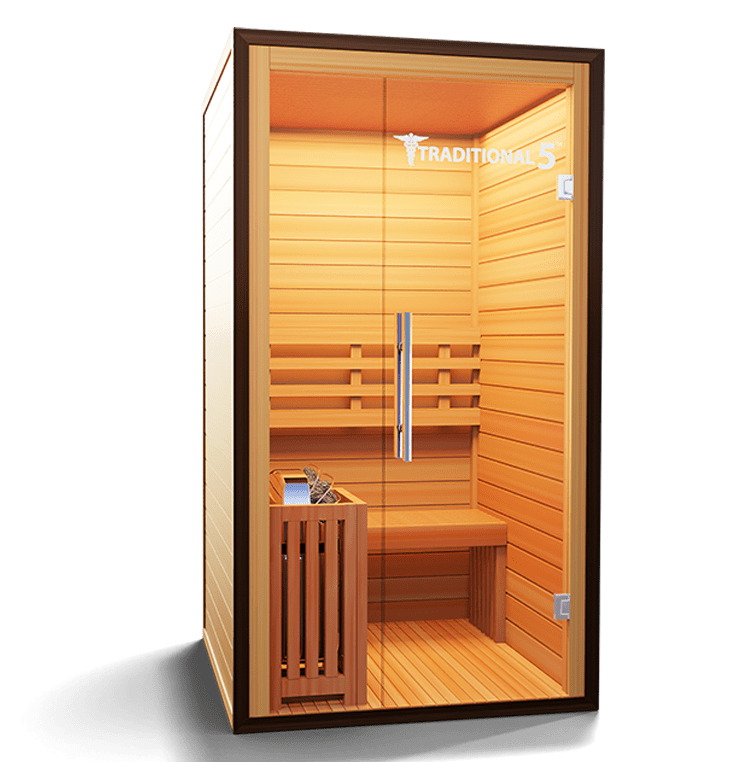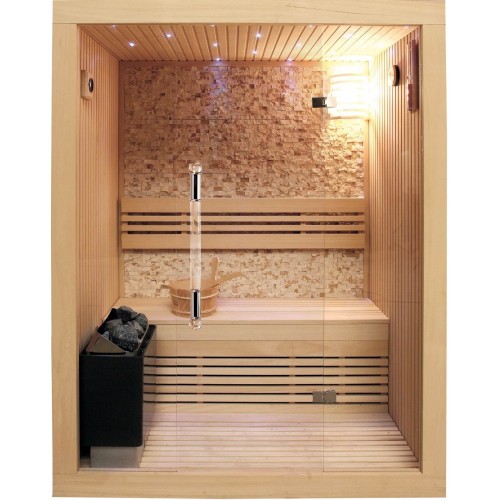Traditional Sauna - Questions
Traditional Sauna - Questions
Blog Article
The Basic Principles Of Traditional Sauna
Table of ContentsTraditional Sauna - An OverviewSome Ideas on Traditional Sauna You Need To KnowTop Guidelines Of Traditional SaunaThe Only Guide to Traditional Sauna
Many of the weight shed in a sauna is water loss and is re-gained upon rehydrating. However, without a doubt sauna can be a vital part of a healthy and balanced weight loss program. To consider the distinctions between traditional and IR saunas, I will certainly separate these right into proven, academic, and fabricated distinctions.Therefore, the hottest point in the saunawhich is at the ceiling directly over the sauna heateris commonly in between 185 and 190 F. Traditional Sauna. Claims that a typical sauna surpasses 200 F is simply not true and not suitable for electric saunas marketed in the US. The temperature for a far-infrared sauna is usually set between 120 and 140 F; however, unlike the standard sauna, the goal in and IR area is not to attain a heat
As a result of this, the temperature level difference is almost unimportant, since extreme sweating causes both sauna kinds, but the approach of heating up the body is various. In an IR sauna the bather will really feel warm and will sweat a lot, yet at much lower temperatures. Therefore, if the objective is to spend longer time periods in the sauna, the IR sauna is a good selection.

4 Easy Facts About Traditional Sauna Shown
When the heat is attained, the aspects cycle on and off to keep the heat. Many standard sauna users enjoy pouring water over the rocks to create steam to elevate sauna humidity levels. The advantages of pouring water over the rocks consist of: making the area a lot more comfortable, moistening the nasal passages, and allowing the usage of aromatherapy by blending necessary oils with the water.
In a far-infrared sauna, the warm waves pass through the body to successfully heat the body and elevate the body core temperature. To attain this increased temperature, Far-infrared emitters develop infrared power which is close to the same wavelength as that which the body normally emitsoften described as the "Essential Variety" of 7 to 14 microns), so the energy is well gotten by the body.
When the power gets in the body, it causes the body temperature to boost and inevitably results in perspiration. In an infrared sauna it is very important for the emitters/heaters to remain on almost frequently. Given that there is no mass of rocks to maintain heat, the sauna will cool if the emitters shut down.
As pointed out over, the sauna bather in an infrared browse around these guys area desires to position himself before running emitters to get optimal benefit from the warmth. The home heating time for both rooms can be really various, depending upon just how the areas are used. For a typical sauna, a bather must permit 30-40 minutes for the space to achieve a preferred temperature and to properly pre-heat the rocks.
The Greatest Guide To Traditional Sauna
A well constructed sauna will typically accomplish a temperature level of 150-160 F in about 30-40 minutes (Traditional Sauna). For hotter temperatures, the area may require to heat for a longer duration. Once the space attains established temperature level, the heating unit will certainly cycle on and off, generally running concerning 50% of the time. The protected wall surfaces and the heated rocks will keep the area hot and at steady temperature levels.
To some, 15 minutes was "lost" while the infrared power warmed the timber panels as opposed to heating a body, while others discover a pre-heated space to be a lot more comfortable and think an elevated beginning temperature is required to begin sweating. The size of suggested use for every area is about the very same (10-15 minutes per session); nevertheless, because of the lower air temperature levels and the capacity to really feel the results of infrared warmth much faster than a traditional sauna, it is not uncommon for a person to spend a total of 20-30 mins in an infrared sauna.
Conventional saunas have a tendency to be larger (hence utilize more electrical energy) than infrared saunas, although typical saunas are absolutely available in one and 2 individual dimensions also. For a two-person traditional sauna, 5x6 or 5x7 dimension is most preferred. The leading bench can conveniently seat two or three individuals and is likewise long enough to relax throughout the sauna session.


The typical cost per kWH of power in the U.S. is approximately $0.11, so a 4.5 kW heating system will set you back approximately $.50 to compete one hour, if the heating system runs continually for one hour. Commonly a sauna heating unit will certainly run for 75% of the initial hour and 50% of succeeding hours on because the components cycle once the set temperature level is accomplished.
The Single Strategy To Use For Traditional Sauna
A read more two person far-infrared area is typically literally smaller sized than a traditional sauna, commonly concerning 4' x 4' or smaller sized. The IR furnace is usually 1.5-1.7 kW utilizing a 120 volt 15 amp plug-in solution. Given that the space can be utilized sooner than a sauna space, we will presume the room is utilized for to of an hour including anchor warm up time.
Lastly, there is a rarely talked about difference in the social experience between both areas. While our culture has actually lost some of the social advantage of the standard sauna experience, it can be extremely socially gratifying. From household time in the sauna, to heart-felt conversations with loved ones, to sauna partiesthe conventional sauna experience can result in intimate mingling.
The majority of greater end infrared spaces include colored light therapy, audio systems and full-glass fronts. The dimension of a lot of rooms allow for 2 individuals to pleasantly make use of the space, while some styles may enable a third or 4th person to make use of the room. Customized infrared areas are also available, with area dimensions offered up to 7' x 8' x 7' high.
Report this page